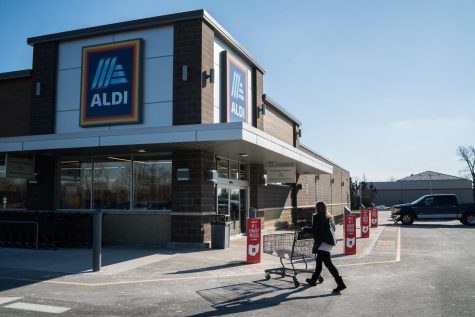Blackletes Find Spaces at Largely-White Institution
At Oberlin, Black students make up only 5.29 percent of the student body. For prospective students, this number can be viewed as a red flag. The fear of not finding a group with which you identify can be intimidating, but many Black students at Oberlin find a community, either through the numerous clubs and programs that promote Blackness and everything within the diaspora, or through athletics.
Although diversity didn’t factor heavily into her college decision, College first-year and volleyball player Lindsey Felton appreciates the diversity she sees within the athletics department at Oberlin.
“I would say that the athletic community is more diverse than most colleges in the Ohio area and in the [North Coast Athletic Conference,] specifically,” said Felton.
College fourth-year and member of the track and field team Nae McClain views diversity in the athletic community as more complicated.
“I think that’s hard because I’ll see some teams [that are diverse], like football and my team are the teams I’m alwayss with,” said McClain. “But then [there are] teams like lacrosse or other teams that usually only have one or two people of color. So I think that’s hard. I want to say [the athletic community is diverse], but I don’t think I can say that fully.”
For some, like College second-year and football player Bryson Christian, it is very clear that Oberlin athletics is lacking in this area.
“It doesn’t feel very diverse,” said Christian. “It feels very white-dominated.”
Despite being a part of the team that McClain thinks of as one of the most diverse in the school, Christian sees it differently.
“Now, [the football team is] definitely not diverse,” said Christian. “It seems like all the Black athletes are leaving. But, when I joined, I was happy with the [number] of Black people on the team. Still mostly white, I think, but it was enough for me.”
Most colleges that are labeled as predominantly-white institutions are very careful to build and construct spaces for underrepresented students — Oberlin being no exception. For the Black community at Oberlin, this effort is best exemplified by the Afrikan Heritage House, or A-House. In addition to organized safe spaces, members of minority groups also will seek out several other support groups. This is where having a team can be extremely useful for Black athletes.
“My team is always ready to defend each other no matter what,” said Felton.
Unfortunately, not every team is as committed to creating a space where Black athletes can feel open about voicing their thoughts and opinions. Some, like Christian, feel that their identity could potentially be at odds with those of their teammates.
“Most of the people on the team have very different thoughts than I do, so I just try to shut that away when I’m with the team,” said Christian. “I don’t talk about [race and other potentially-controversial topics] and I haven’t heard anyone else talk about it because, when we’re there, it’s about football.”
Despite the work the College puts into making everyone feel welcome on its campus, like maintaining safe spaces, such as identity-based housing, these efforts don’t always succeed.
“I definitely don’t feel comfortable,” said Christian. “I feel tension, but that’s mostly within myself because there are things white people on this campus do that they don’t know that they’re doing that make me mad on a daily basis. But I think it’s a one-sided tension.”
Supporting Black students is always going to be tricky on a campus like Oberlin’s — partly because it is, and always has been, a white space — but also because there is no uniform way that all Black students want to be supported.
“Theoretically, I want to say yes [that the College supports Black students],” said McClain. “But when you look around and you’re looking at coaching staff or the administration, there aren’t a lot of Black people in those positions. … [They’re] getting all these Black kids together, but not having people over them that look like them or that can have those relatable experiences. So, in that way, I want to say we’re not being supported.”
While McClain is comfortable with her team, this feeling doesn’t always extend across campus.
“Outside of athletics, you’ll go to a class and there might be, like, two Black people,” said McClain. “That’s been kind of hard. Sometimes, that’s just very uncomfortable, or maybe overwhelming, to enter into conversations and being looked at as a voice for the Black community. But I don’t feel that within my team.”
All students on campus need a support group. For many Black students, like McClain and Felton, this can mean their athletic team. For others, like Christian, it is the larger Black community as a whole, which he thinks could still improve in its efforts to unite and support Black students.
“I think the biggest thing that hurts the Black community on campus is the fact that A-House is all the way south,” said Christian. “So, I think, if there was a way to get more Black people from north campus down to south campus, that would really do a lot. Also, maybe more centralized events because I think A-House is happy where it’s at; there’s a lot of history in that building so I don’t think it needs to move, but just [needs] a way for everyone to come together.”
Regardless, it is important to find your community as a Black student. McClain agrees, knowing that her time at Oberlin was enhanced by the bond she formed with her teammates.
“For me, it’s been an easier experience because I have formed a group [within my team] that I really like, but it makes me think about people who don’t have those groups,” said McClain. “So, I’ve been good, but I think it’s important for everyone to have those groups. So, just a word to the wise: form those groups.”






